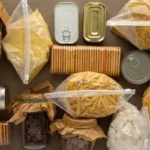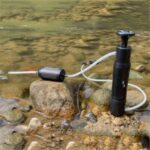October 3, 2024 SHTF
Wherever you choose to store water for your home, make sure it is in an easily accessible location.
Always keep it out of direct sunlight.
Drinking water, how to store it in a safe way

When it comes to storing drinking water, safety is paramount.
There are containers made from a variety of materials, and some are better than others for long-term storage of drinking water.
Glass containers
Glass can be a good option, but keep in mind that it can easily break or crack when the temperature reaches freezing.
The best type for food and water storage is borosilicate glass, which is particularly resistant to breakage.
But the real problem with glass containers is that they are always limited in size.
Plastic containers
Plastic is very durable, and the best part is that containers are available in virtually any size.
In fact, it is advisable to always have tens (if not hundreds) of liters of water on hand for long-term scenarios, as it is the most valuable resource for survival.
Choose a brand new plastic container, and one that is especially safe for storing food.
It is never advisable to recycle plastic containers or bottles, as residues or contaminants may remain even after washing.
A plastic food container will be marked as such and you should look for the triangular recycling symbol and the number 1, 2, 4 or 5.
A container labeled with the number 2 is the best choice because it indicates that it is made of high-density polyethylene plastic, the strongest plastic on the market today.
It is a material that is so safe and, more importantly, so durable that it can last for decades.
Stainless steel tanks
A stainless steel tank is ideal for storing rainwater that can later be made potable through boiling or other purification processes.
Stainless steel also ensures a long service life and the tank can withstand all weather conditions.
Rainwater harvesting
Rainwater harvesting is an economical and, above all, convenient solution.
As mentioned earlier, you can choose a stainless steel tank, but there are also plastic tanks and containers designed specifically for this purpose.
Depending on weather conditions, it may not take long to fill a tank and then prepare it for safe storage.
How and where to store water containers
The storage of drinking water containers has a significant impact on water quality.
To ensure that water remains potable for a long time, plastic containers must be stored in a cool and dark place, such as a basement.
This is because plastic can leach chemicals into the water when exposed to sunlight and high temperatures.
Always keep bottled water on hand for short-term emergencies, such as a power or drinking water outage.
This could happen at any time, as a water main break (or power outage) is not uncommon.
Most importantly, wherever you decide to store water for your home, make sure it is in a place that is easily accessible and always out of direct sunlight.











